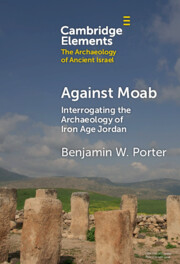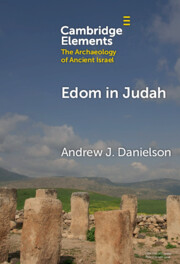Refine search
Actions for selected content:
212 results
High-resolution near-infrared data reveal Pazyryk tattooing methods
-
- Article
-
- You have access
- Open access
- HTML
- Export citation
Achieving Equality: Why There Was Not as Much Inequality in Prehistoric Europe as We Imagine
-
- Journal:
- American Antiquity / Volume 90 / Issue 3 / July 2025
- Published online by Cambridge University Press:
- 20 August 2025, pp. 446-466
- Print publication:
- July 2025
-
- Article
-
- You have access
- Open access
- HTML
- Export citation
Fortified Island (FORTIS): fortifications and communities on Iron Age Bornholm
-
- Article
-
- You have access
- HTML
- Export citation
Iron Age ship cargoes from the harbour of Dor (Israel)
-
- Article
-
- You have access
- Open access
- HTML
- Export citation

Against Moab
- Interrogating the Archaeology of Iron Age Jordan
-
- Published online:
- 14 March 2025
- Print publication:
- 10 April 2025
-
- Element
-
- You have access
- Open access
- HTML
- Export citation
Inscribed sandstone fragments of Hole, Norway: radiocarbon dates provide insight into rune-stone traditions
-
- Article
-
- You have access
- Open access
- HTML
- Export citation

Edom in Judah
- Trade, Migration, and Kinship in the Late Iron Age Southern Levant
-
- Published online:
- 20 November 2024
- Print publication:
- 19 December 2024
-
- Element
- Export citation
The archaeological record of the Qaraçay River Basin along the northern piedmont of the Lesser Caucasus
-
- Article
-
- You have access
- Open access
- HTML
- Export citation
The Enderby Bark Shield: A New Model for the Ancient World
-
- Journal:
- Proceedings of the Prehistoric Society / Volume 90 / December 2024
- Published online by Cambridge University Press:
- 22 October 2024, pp. 205-228
- Print publication:
- December 2024
-
- Article
-
- You have access
- Open access
- HTML
- Export citation
Archaeological mineralised textiles from the Iron Age tumulus of Creney-le-Paradis support its elite status
-
- Article
-
- You have access
- Open access
- HTML
- Export citation
10 - Farmers and Foragers: the First Millennium
-
- Book:
- The Archaeology of Southern Africa
- Published online:
- 15 May 2024
- Print publication:
- 06 June 2024, pp 272-313
-
- Chapter
- Export citation
Fifteen - The Role of Aegean Imports and Aegeanizing Wares in the Phoenician Cemetery of al-Bass, Tyre
-
-
- Book:
- Greek Iron Age Pottery in the Mediterranean World
- Published online:
- 30 May 2024
- Print publication:
- 06 June 2024, pp 456-475
-
- Chapter
- Export citation
Inequalities in wealth distribution within Imperial Assyrian graves
-
- Article
-
- You have access
- Open access
- HTML
- Export citation
A Light in Dark Places: Later Prehistoric Mortuary Activity in Caves in Scotland and Northern England
-
- Journal:
- Proceedings of the Prehistoric Society / Volume 90 / December 2024
- Published online by Cambridge University Press:
- 31 May 2024, pp. 85-103
- Print publication:
- December 2024
-
- Article
- Export citation
What Rivers Did: a Study of if and how Rivers Shaped Later Prehistoric Lives in Britain and Beyond
-
- Journal:
- Proceedings of the Prehistoric Society / Volume 90 / December 2024
- Published online by Cambridge University Press:
- 12 April 2024, pp. 37-62
- Print publication:
- December 2024
-
- Article
-
- You have access
- Open access
- HTML
- Export citation
Iron Age Connectivity Revealed by an Assemblage of Egyptian Faience in Central Iberia
-
- Journal:
- European Journal of Archaeology / Volume 27 / Issue 3 / August 2024
- Published online by Cambridge University Press:
- 20 March 2024, pp. 289-311
-
- Article
-
- You have access
- Open access
- HTML
- Export citation
